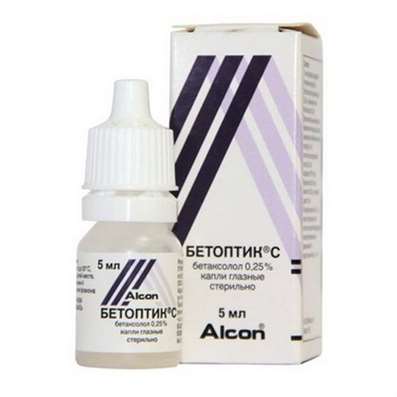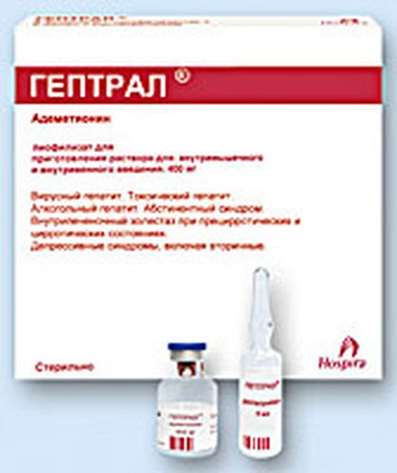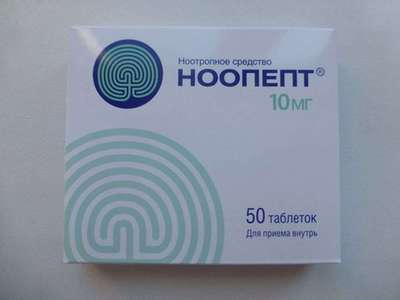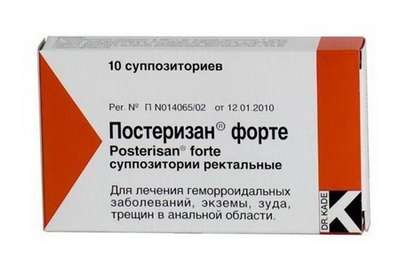Instruction for use: Dexatobropt
I want this, give me price
Active substance Dexamethasone + Tobramycin
ATX code H02AB02 Dexamethasone
Pharmacological group
Glucocorticosteroids in combinations
Composition
1 ml of the preparation contains:
Active ingredients: dexamethasone 1.0 mg; Tobramycin - 3.0 mg;
Auxiliary substances: tyloxapol - 0.5 mg; Hypromellose (HPMC 4000 cP) 5.0 mg; Sodium sulfate - 12.0 mg; Sodium chloride - 3.3 mg; Disodium edetate dihydrate - 0.10 mg; Benzalkonium chloride - 0.10 mg; 1 M sodium hydroxide solution or 1 M sulfuric acid solution to pH 5.0-6.0; Purified water - up to 1 ml.
Description of dosage form
A suspension of white or almost white color, possibly the presence of a precipitate, which dissipates rapidly with slight agitation.
Pharmacological group
Glucocorticosteroid for topical use + antibiotic-aminoglycoside.
Pharmacodynamics
DexaTobroplet is a combined preparation with antibacterial and anti-inflammatory action for topical application in ophthalmology. Tobramycin is a broad-spectrum antibiotic from the aminoglycoside group. Violates protein synthesis and permeability of the cytoplasmic membrane of the microbial cell. It is active against gram-positive and gram-negative microorganisms: staphylococci (including Staphylococcus aureus, Staphylococcus epidermidis), including strains resistant to methicillin; Streptococci, including some beta-hemolytic species of group A, non-hemolytic species and some strains of Streptococcus pneumoniae; Pseudomonas aeruginosa; Escherichia coli; Klebsiella pneumoniae; Enterobacter spp; Proteus mirabilis; Morganella morganii; Citrobacter spp; Haemophilus influenzae; Moraxella spp; Acinetobacter spp; Serratia marcescens. Dexamethasone is a synthetic fluorinated glucocorticosteroid (GCS). Has a pronounced anti-inflammatory, antiallergic and desensitizing effect. Dexamethasone actively suppresses inflammatory processes, inhibiting eosinophilic ejection of inflammatory mediators, migration of mast cells and decreasing capillary permeability and vasodilation. Does not have mineralocorticoid activity.
Pharmacokinetics
Suction
Dexamethasone
After topical application of the drug, systemic absorption of dexamethasone is low. The maximum concentration (C max) of dexamethasone in blood plasma is from 220 to 888 pg / ml (about 555 ± 217 pg / ml) after applying the drug 1 drop in each eye 4 times a day for 2 days.
Tobramycin
After topical application of the drug, systemic absorption of tobramycin is low. The concentration of tobramycin in the blood plasma after applying the drug 1 drop in each eye 4 times a day for 2 days was below the detection threshold in 9 of 12 patients. C max tobramycin in blood plasma is 247 ng / ml, which is 8 times lower than the concentration threshold associated with nephrotoxicity.
Distribution
Dexamethasone
About 77-84% of dexamethasone entering the systemic circulation is associated with plasma proteins.
Metabolism and excretion
Dexamethasone
It is excreted by metabolism, about 60% in the form of 6-β-hydroxydexamethasone by the kidneys. The half-life period averages 3-4 hours.
Tobramycin
Tobramycin is excreted by the kidneys, mostly unchanged.
Indications
- Inflammatory diseases of the eye and its appendages caused by pathogens that are sensitive to the drug:
- blepharitis;
- conjunctivitis;
- Blepharoconjunctivitis;
- keratitis;
- keratoconjunctivitis;
- Iridocyclitis.
Prevention and treatment of inflammatory phenomena in the postoperative period after cataract extraction.
Contraindications
- hypersensitivity to any of the components of the drug;
- superficial forms of keratitis caused by Herpes simplex, in particular, dendritic keratitis;
- vaccination, varicella and other viral diseases of the cornea and conjunctiva;
- mycobacterial infections of the eyes;
- fungal diseases of the eyes;
- previously untreated parasitic eye infections;
- acute purulent diseases of the organ of vision without concomitant antimicrobial therapy;
- condition after removal of the foreign body of the cornea or with defects of the epithelium of the cornea of another etiology;
- children's age till 12 years;
- the period of breastfeeding.
With caution: deep stromal keratitis caused by Herpes simplex; pregnancy.
pregnancy and lactation
Pregnancy
High doses of aminoglycosides in systemic application have been associated with the development of ototoxicity. However, after topical application in ophthalmology, the systemic concentration of tobramycin is very low, and it will not cause a direct or indirect negative impact on reproductive function. Local application of GCS in pregnant animals can cause developmental disorders of the fetus, including cleft palate. Clinical significance is unknown. Animal studies have shown that the introduction of GCS in the recommended doses during pregnancy can increase the risk of intrauterine development of the fetus, the development of cardiovascular diseases and / or metabolic disorders and / or psychophysiological development disorders. At present, there are no data on the embryotoxic effect of the drug when it is used during pregnancy in humans. Nevertheless, the danger to the fetus can not be ruled out. The use of GCS in the last trimester of pregnancy can cause the inhibition of the production of own GCS in a fetus that requires treatment after birth.
Thus, the drug DexaTobroplet during pregnancy should be used only when the potential benefit of therapy for the mother exceeds the potential risk to the fetus.
Breastfeeding period
Data on the penetration of dexamethasone into breast milk are absent. Tobramycin penetrates into breast milk during systemic application. Data on the penetration of dexamethasone and tobramycin into breast milk after topical application in ophthalmic dosage forms are not available. It is unlikely that dexamethasone and tobramycin, when applied topically in the form of eye drops, can cause clinical effects in the newborn. However, the potential risk to the child can not be completely ruled out. The decision to stop breastfeeding or to suspend or stop therapy with the drug should be taken, taking into account the benefits of breastfeeding for the baby and the benefits of therapy for the mother.
Dosing and Administration
Locally. Shake the bottle before use!
Children aged 12 years and adults, including elderly patients, are dosed 1-2 drops into the conjunctival sac of the affected eye (or eyes) every 4 to 6 hours.
In the first 24-48 hours the dose can be increased to 1-2 drops in the conjunctival sac every 2 hours, followed by a decrease in the frequency of instillations of the drug as the inflammatory phenomena decrease.
Care must be taken not to discontinue therapy prematurely.
In acute severe infectious process: 1-2 drops in the conjunctival sac every 60 minutes until the severity of the condition decreases. Then it is necessary to reduce the frequency of instillations of the drug to 1-2 drops in the conjunctival sac every 2 hours for 3 days. Then 1-2 drops in the conjunctival sac every 4 hours for 5-8 days. If necessary, continue instillation: 1-2 drops in the conjunctival sac for 5-8 days.
Prevention of inflammatory phenomena in the postoperative period after cataract extraction: 1 drop in the conjunctival sac 4 times a day, starting from the day of surgery up to 24 days.
Therapy can be started before the operation: 1 drop in the conjunctival sac 4 times a day for 1 day before surgery, 1 drop in the conjunctival sac on the day of the operation, then 1 drop in the conjunctival sac 4 times a day for 23 days. If necessary, the frequency of instillations of the drug can be increased to 1-2 drops in the conjunctival sac every 2 hours for the first 2 days after surgery.
After applying the drug to reduce the risk of systemic side effects, it is recommended to lightly press the finger on the area of the projection of lacrimal sacs at the inner corner of the eye within 1-2 minutes after instillation of the drug - this reduces the systemic absorption of the drug.
In case of application with other local ophthalmic preparations, the interval between their use should be at least 5 minutes.
The bottle must be closed after each use. Do not touch the tip of the dropper bottle to any surface to maintain the sterility of the solution.
Side effects
Information on adverse events was obtained both during clinical trials and during post-registration follow-up.
Undesirable reactions are classified according to the following frequency range: very often (≥ 1/10), often (from ≥ 1/100 to <1/10); Infrequently (from ≥ 1 / 1,000 to <1/100); Rarely (from ≥ 1 / 10,000 to <1 / 1,000); Very rarely (<1 / 10,000), with an unknown frequency
Overdose
The development of toxic effects in the local application of the drug or if it is accidentally swallowed is unlikely. If the excess amount of the drug gets into the conjunctival cavity, it is necessary to wash the eyes with warm water. In case of accidental ingestion, treatment is symptomatic.
Interaction
With the joint use of non-steroidal anti-inflammatory drugs (NSAIDs) for topical application in ophthalmology and GCS for topical application in ophthalmology, it is possible to potentiate the negative effect of drugs on the healing processes of the cornea. In patients receiving ritonavir, the concentration of dexamethasone in blood plasma may increase (see section "Special instructions").
special instructions
Some patients may experience hypersensitivity reactions to aminoglycosides for topical use. Hypersensitivity reactions (allergic reactions) can be of different severity and vary from local to generalized reactions, including erythema, pruritus, urticaria, rash, anaphylaxis, anaphylactoid reactions, or bullous reactions.
If hypersensitivity develops during treatment, treatment should be discontinued.
It is possible to develop cross-over hypersensitivity to other aminoglycosides. Patients with increased sensitivity to tobramycin for topical use may also be sensitive to other aminoglycosides for topical or systemic use.
Patients treated with aminoglycosides for systemic use experienced serious adverse reactions, including neurotoxicity, ototoxicity, and nephrotoxicity. Caution should be exercised with simultaneous local and systemic use of aminoglycosides.
Care should be taken when using the drug in the therapy of deep stromal keratitis caused by Herpes simplex; Also, with this herpetic lesion of the eye, frequent biomicroscopy is necessary.
Long-term use of GCS for topical application in ophthalmology, exceeding the maximum recommended duration of therapy - 24 days, can lead to increased intraocular pressure and the development of a glaucoma symptom complex, including optic nerve damage, reduced visual acuity and narrowing of the visual field boundaries; To the formation of posterior subcapsular cataract. Therefore, patients with long-term use of drugs containing GCS should regularly and often measure intraocular pressure.
The risk of increased intraocular pressure and / or cataract formation due to the use of GCS is higher in patients with a predisposition (for example, with diabetes mellitus).
In predisposed patients, including children and patients receiving ritonavir, after intensive therapy or continuous long-term therapy, Itzenko-Cushing syndrome and / or suppression of adrenal function may occur due to systemic absorption of dexamethasone in local ophthalmic use. In these cases, the drug should be withdrawn not immediately, but gradually.
SCS can reduce resistance to bacterial, viral or fungal infections and promote their development, as well as mask the clinical signs of infection.
The appearance of non-healing ulcers on the cornea may indicate the development of fungal infestation. If fungal invasion occurs, GCS therapy should be discontinued.
Prolonged use of antibiotics, such as tobramycin, can lead to increased growth of resistant organisms, including fungi. With the development of superinfection, the drug should be discontinued and appropriate therapy initiated.
The use of a fixed combination of dexamethasone and tobramycin in the treatment of acute purulent infections of the organ of vision is possible only in the case of previous local antibiotic therapy, since the use of dexamethasone during this period can make the infection process more difficult. A sharp cessation of therapy due to the possibility of resumption of symptoms of an infectious or inflammatory lesion of the eye is undesirable. SCS with topical application may slow the healing process of the cornea. NSAIDs for topical application also slow healing. Simultaneous application of NSAIDs for topical application and GCS for topical application may increase the likelihood of disruption of healing.
In diseases that cause thinning of the cornea or sclera, perforations can result from the use of GCS for topical application. If the duration of therapy is more than 2 weeks, the condition of the cornea should be monitored.
In the case of topical administration of tobramycin concomitantly with the antibiotics of the aminoglycoside group for systemic use, the general picture of the blood should be monitored.
In the treatment of inflammatory eye diseases, contact lenses should not be worn. The drug contains benzalkonium chloride, which can cause eye irritation and change the color of soft contact lenses. Avoid contact with soft contact lenses. If patients are allowed to wear contact lenses, they should be instructed that before using the drug, soft contact lenses should be removed and placed back no earlier than 15 minutes after instillation of the drug.
Impact on fertility
Studies of the effect of the drug on the fertility of animals or humans have not been conducted. Clinical data for assessing the impact on fertility of men or women are limited.
Impact on the ability to drive vehicles and mechanisms
Temporary blurring of vision or other visual impairment after application of the drug may affect the ability to drive vehicles and mechanisms. If blurred vision occurs after instillation of the drug, then before starting the management of vehicles and mechanisms, the patient should wait for the restoration of clear vision.
Form of issue
Eye drops.
For 5 ml of the drug in a white polymer bottle-dropper closed with a polymer lid with a safety ring. One bottle-dropper along with instructions for use in a cardboard pack.
Storage conditions
In dry, dark place at a temperature of no higher than 25 ° C.
After opening, the vial should be stored at a temperature of no higher than 25 ° C and used within 4 weeks.
Keep out of the reach of children!
Shelf life
3 years.
Do not use after the expiry date printed on the package!
Conditions of leave from pharmacies
Letting go by prescription.

 Cart
Cart





